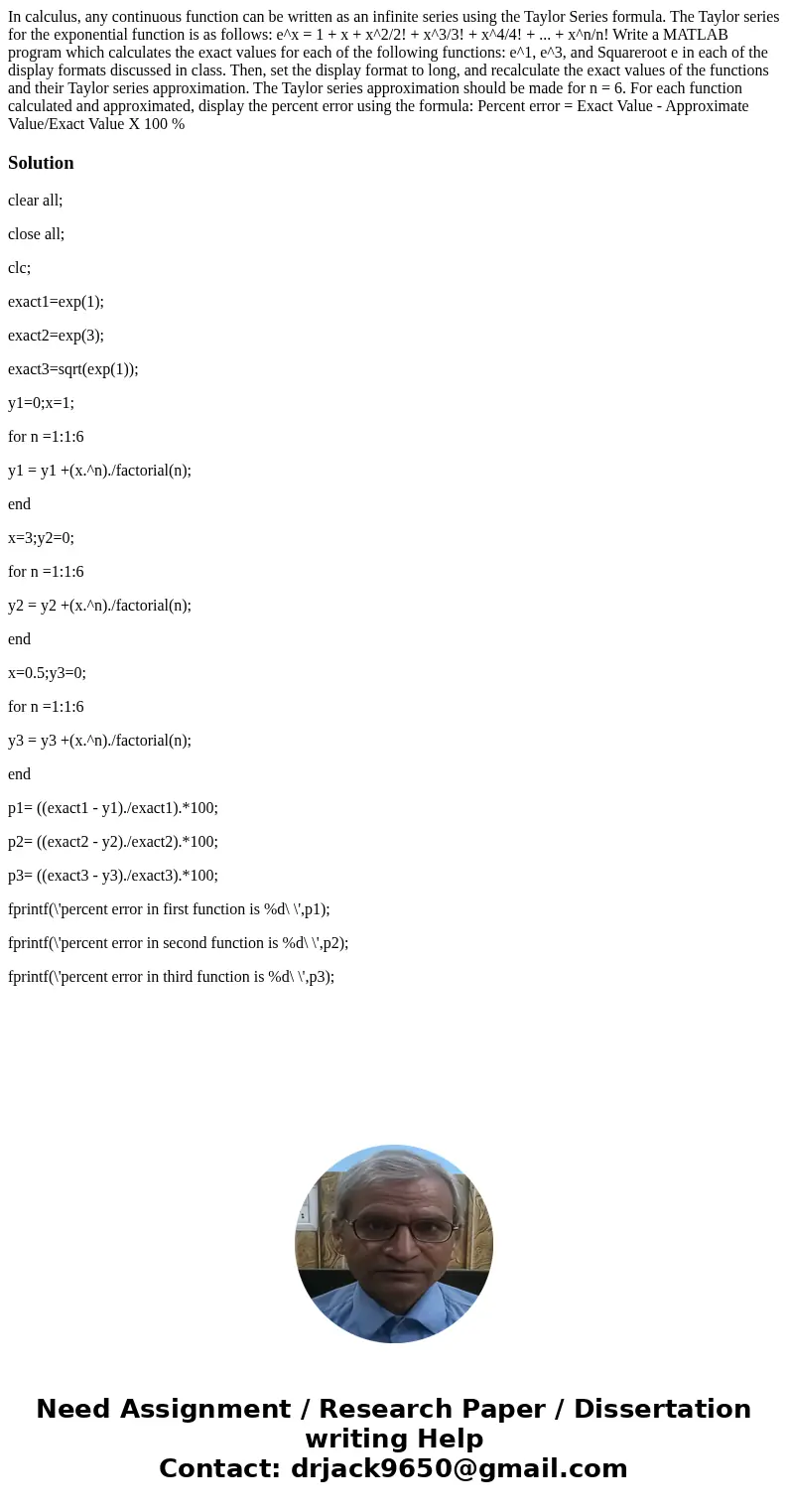In calculus any continuous function can be written as an inf
In calculus, any continuous function can be written as an infinite series using the Taylor Series formula. The Taylor series for the exponential function is as follows: e^x = 1 + x + x^2/2! + x^3/3! + x^4/4! + ... + x^n/n! Write a MATLAB program which calculates the exact values for each of the following functions: e^1, e^3, and Squareroot e in each of the display formats discussed in class. Then, set the display format to long, and recalculate the exact values of the functions and their Taylor series approximation. The Taylor series approximation should be made for n = 6. For each function calculated and approximated, display the percent error using the formula: Percent error = Exact Value - Approximate Value/Exact Value X 100 % 
Solution
clear all;
close all;
clc;
exact1=exp(1);
exact2=exp(3);
exact3=sqrt(exp(1));
y1=0;x=1;
for n =1:1:6
y1 = y1 +(x.^n)./factorial(n);
end
x=3;y2=0;
for n =1:1:6
y2 = y2 +(x.^n)./factorial(n);
end
x=0.5;y3=0;
for n =1:1:6
y3 = y3 +(x.^n)./factorial(n);
end
p1= ((exact1 - y1)./exact1).*100;
p2= ((exact2 - y2)./exact2).*100;
p3= ((exact3 - y3)./exact3).*100;
fprintf(\'percent error in first function is %d\ \',p1);
fprintf(\'percent error in second function is %d\ \',p2);
fprintf(\'percent error in third function is %d\ \',p3);

 Homework Sourse
Homework Sourse